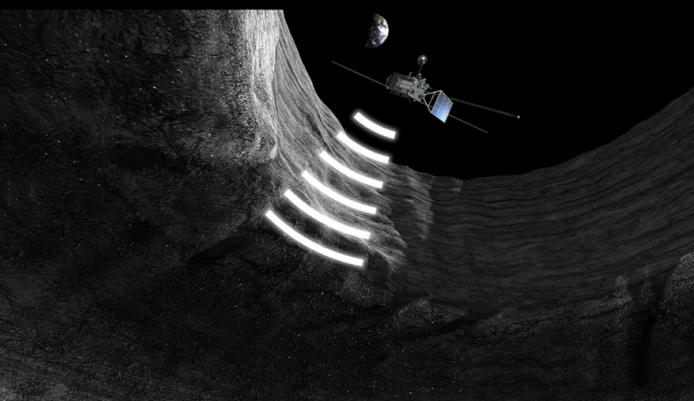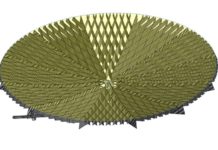Last week, Japan’s Institute of Space and Astronautical Science (ISAS) detected what may possibly be an intact 50km lava tube in the Marius Hills region of the Moon. If true, this may give insight into the Moon’s geological history, provide an analog environment for Martian lava tubes, and offer humanity safe place to build large-scale lunar bases.
However, the presence of the lava tubes is as yet unconfirmed – scientists have thus far only managed to infer their existence based on corroborating data from Japan space agency JAXA’s SELENE lunar orbiter and NASA’s GRAIL spacecraft.
Background – The idea of lava tubes
Lava tubes, and especially their presence in the Marius Hills region of Oceanus Procellarum, were first hypothesized in the late 1960s. Based on surveys of the volcanic terrain of Marius Hills, as well as the presence of rilles, NASA researchers such as VR Oberbeck and Ronald Greeley attempted to draw comparisons between the geology of the Moon and that of Earth – in particular, of the volcanoes in Hawaii.
They found some similarities between the two. For example, Apollo 11 and 12 mare samples closely resembled terrestrial basalt, allowing them to postulate that the Moon experienced something akin to basaltic lava flows. Also, lunar rilles seemed to share some morphological similarities with lava tubes and channels on Earth.
Marius Hills’ potential to house lava tubes became more promising after the Lunar Orbiter 5 mission, a lunar orbiter NASA sent to the Moon in 1967. The last of five probes sent as part of NASA’s Lunar Orbiter programme, the spacecraft’s primary mission was to survey Marius Hills – one of the potential landing sites for the Apollo missions.
Amongst its other payloads, Lunar Orbiter 5 was equipped with a dual-lens camera system that enabled it to take medium and high resolution photographs. This produced the first clear images of the Marius Hills’ rilles, complementing previous images from Lunar Orbiters 2 and 4. Also photographed was the Hadley Rille, which was later chosen as the Apollo 15 landing site.
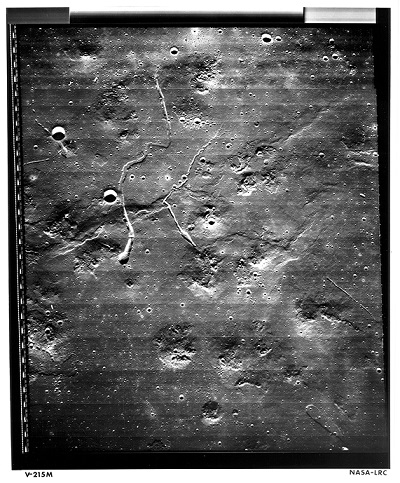
Although images of Marius Hills were taken, they did not reveal a lava tube entrance or a skylight, which was deemed necessary for proving the existence of lava tubes. Later on, the conclusion of the Lunar Orbiter and Apollo programmes meant that there was no opportunity to verify this hypothesis until the 1990s, when lunar missions were actively conducted once again.
2009: Japan’s lunar orbiter SELENE discovers a skylight
In 2009, about two years after Japan launched its second lunar orbiter SELENE (nicknamed Kaguya), Japanese scientists led by Junichi Haruyama announced the discovery of a vertical hole on the Moon, located in a rille at the Marius Hills region. This marked the revival of the global hunt for lunar lava tubes, validating the theories put forth in the 1960s-70s.
The vertical hole – or skylight – was detected by SELENE’s two high-resolution cameras: the Terrain Camera and the Multi-band Imager. Initial studies measured it to be nearly circular, 65m in diameter, with an estimated depth of 80-88m. The skylight became known as the Marius Hole, or the Marius Hills Hole.
In 2011, NASA’s Lunar Reconnaissance Orbiter (LRO), launched in 2009, managed to capture a more detailed photograph of the Marius Hills Hole at a resolution of 0.5 m. After analysis, the hole was determined to be 58 x 49 m in diameter and 40 m deep. Following that, LRO photographed more than 200 more holes that suggest the presence of skylights.
2016: GRAIL gravity data suggests lava tubes
In 2016, four years after NASA’s Gravity Recovery and Interior Laboratory (GRAIL) ended, researchers studying GRAIL data independently found indications of possible lava tubes about 1 km wide.
By studying variations in the Moon’s gravitational pull, scientists were able to infer subsurface densities on the Moon. Various scientific papers from the Lunar and Planetary Institute, Houston, Purdue University and others, all postulated the presence of intact caverns, or lava tubes, in the Marius Hills rilles; lava tubes, it turned out, presented the most reasonable explanation for the variations in subsurface densities.
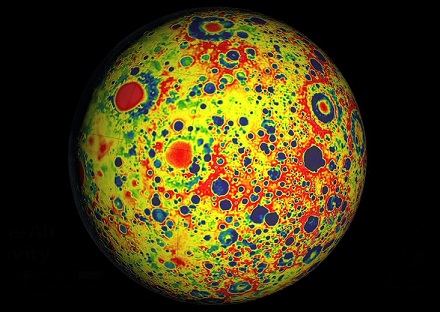
2017: SELENE and GRAIL data compared
By comparing data from SELENE and GRAIL, JAXA scientists postulated the existence of a 50 km-long lava tube.
After discovering the skylight from the image captured by SELENE, JAXA used the spacecraft’s Lunar Radar Sounder (LRS) to determine the depths of lunar cavities. Consisting of two sets of dipole antennae transmitting electromagnetic (4-6MHz) waves, the LRS was able to receive radar echoes from the Marius Hills Hole. By measuring these radar echoes, the JAXA team found that the cavities along Marius Hills might all be linked, indicating the presence of a lava tube.
The LRS data was mapped onto the GRAIL data to see if the two matched. A study of the results from four different holes suggested that they may be part of a large, intact lava tube.
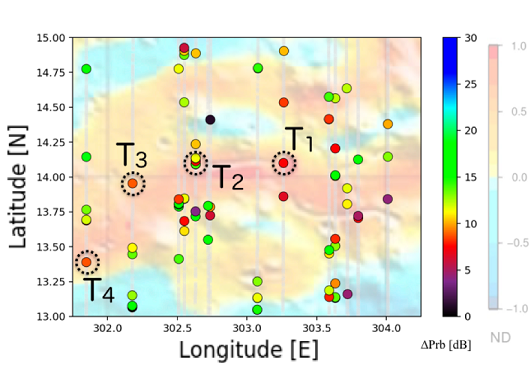
Other possible lava tubes
Aside from the possible lava tube in the Marius Hills region, there might be other lava tubes on the Moon. For example, the LRO has photographed skylights at Mare Ingenii and Mare Tranquillitatis. In 2011, data from India’s first lunar probe Chandrayaan-1 was released, showing a buried, uncollapsed and near-horizontal lava tube in the Oceanus Procellarum area of the Moon. The lava tube was found using a Terrain Mapping Camera (TMC) with a 5 m spatial resolution and three-dimensional viewing capability. From TMC’s images, ISRO scientists found that some rilles might be connected by an undamaged lava tube.
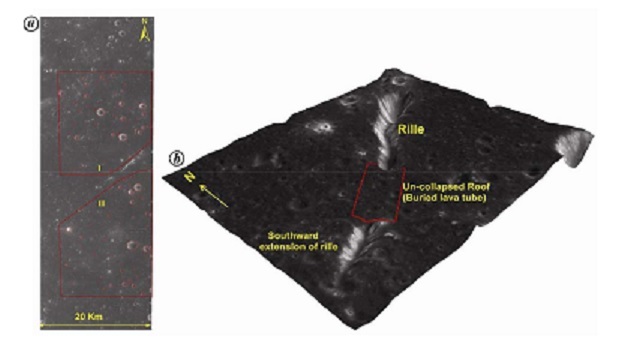
An ideal location for a lunar base
If these lava tubes really do exist, they would be ideal locations for setting up a lunar base; protected from the elements, they resemble terrestrial caves that have remained undisturbed for thousands of years. Also, because lava tubes have also been discovered on Mars, lunar lava tubes might serve as a good analog for the Martian environment, and might also give insight into the formation of the Moon and the Earth.

